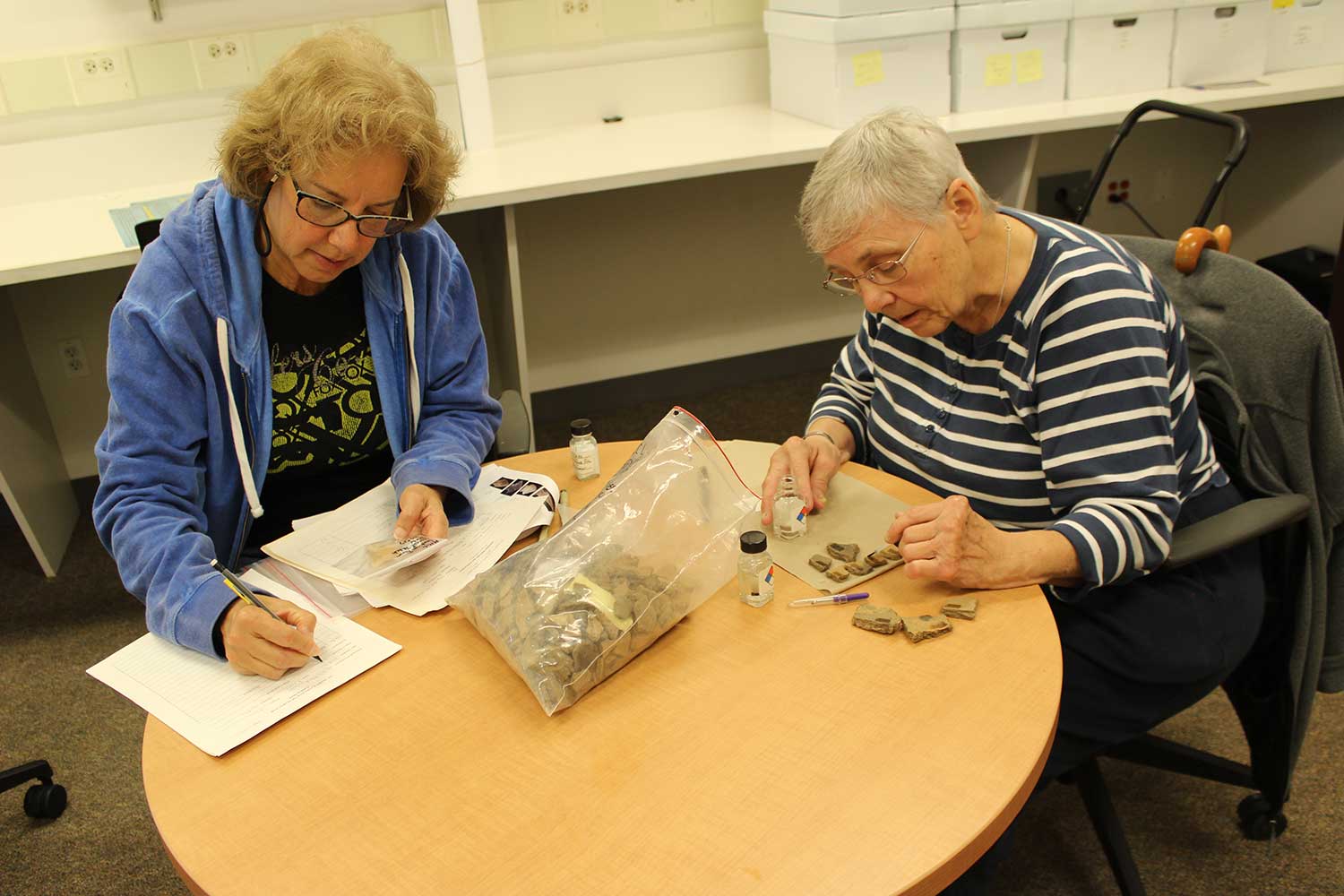 For the Anthropology department at St. Mary’s College of Maryland, finding permanent, qualified individuals to assist with highly-detailed archeological documentation on a long-term basis can be difficult. Because the professors in the Anthropology department are often on work sites or focused on larger aspects of the projects, having volunteers to help with organization of artifacts in the lab is a necessity. The department relies on its volunteers to help with the labor-intensive work required to fully process the artifacts found on different sites. Students often take on these roles, assisting with the cleaning and cataloguing of artifacts. The experience helps them gain a deeper understanding of the work they’re doing and provides them with valuable experience for life after they graduate. However, as Dr. Julie King explains, “students move on; classes end, they graduate. Volunteers are here for the long haul, developing skills including labeling and artifact identification that just can’t be taught in a semester.”
For the Anthropology department at St. Mary’s College of Maryland, finding permanent, qualified individuals to assist with highly-detailed archeological documentation on a long-term basis can be difficult. Because the professors in the Anthropology department are often on work sites or focused on larger aspects of the projects, having volunteers to help with organization of artifacts in the lab is a necessity. The department relies on its volunteers to help with the labor-intensive work required to fully process the artifacts found on different sites. Students often take on these roles, assisting with the cleaning and cataloguing of artifacts. The experience helps them gain a deeper understanding of the work they’re doing and provides them with valuable experience for life after they graduate. However, as Dr. Julie King explains, “students move on; classes end, they graduate. Volunteers are here for the long haul, developing skills including labeling and artifact identification that just can’t be taught in a semester.”
Sara Fisher and Isabel Tonkavitch are two long-time volunteers in the Anthropology lab at SMCM who offer an invaluable resource to the program. Fisher has been working with the school for 5 or 6 years, coming in regularly to help clean and label catalogued artifacts. Tonkavitch began volunteering with archaeology in 2011 while still working full time as a federal employee. After retiring, she completed and graduated from the Certified Archeology Technician program under the Archeological Society of Virginia, which she says opened doors for her to volunteer for programs like the one found at SMCM. Both women highlight how incredible it is to work under Dr. King and Scott Strickland and how their passion for the work inspires them to continue working at the college.
One big question I had for the women was why they keep coming back. Why not move on to other things? Fisher explained that it sets her imagination free. For her, she says: “It’s not just touching something or looking at something, sometimes you have to listen to the sound something makes when it’s tapped on the table and see if you can hear what the substance is like from that.” It is an opportunity to continue to learn each time she comes in and a chance to see and work with artifacts that no other person has worked with before. Tonkavitch had a similar experience. “I learn something new every time I come here,” she says. Not only that, but she understands that the results of what they are doing will remain long after they themselves are gone. She says that working around King and Strickland’s enthusiasm keeps her excited about the work they are doing.
When asked about the value of having volunteers like Fisher and Tonkavitch, King explained: “They provide a great balance to our work. And it’s good for our students to see the productivity of life after retirement.”
Written by Zoe Smedley ’19, English major and PFP student for Marketing & Communications
